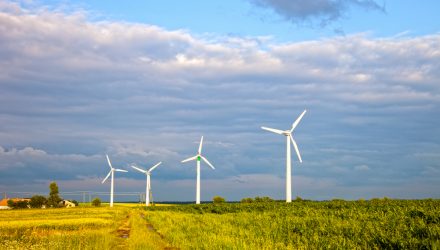When it comes to renewable energy ETFs, investors can choose from funds that offer broad exposure and those that focus on a specific industry. The latter group includes the First Trust Global Wind Energy ETF (FAN).
FAN tracks the ISE Clean Edge Global Wind Energy Index. The asset is relevant at a time when wind energy is one of the centerpieces of President Biden’s ambitious green energy agenda. The Biden administration wants to build 30 gigawatts (GW) of offshore wind projects by 2030.
“In online conferences over the past two weeks, offshore wind advocates, wary after years of mixed signals from the federal government, now see momentum gathering toward commercialization,” notes S&P Global Market Intelligence. “In addition to announcing the 30-GW goal, the Biden administration has also completed the environmental impact statement for the nation’s first major offshore wind proposal.”
Encouraging Signs for FANs
Momentum for renewable energy projects, particularly when big government is involved, can move in fits and starts, but there are some encouraging signs mounting that FAN can snap out of its 2021 funk.
“The U.S. Department of the Interior’s Bureau of Ocean Energy Management has taken initial steps to prepare environmental statements for Ørsted A/S and Public Service Enterprise Group Inc.’s planned 1,100-MW Ocean Offshore Wind Farm off the coast of New Jersey,” according to S&P Global. “BOEM did the same for Ørsted and Eversource Energy’s proposed 704-MW Revolution Wind Offshore project off the coasts of Massachusetts and Rhode Island.”
What’s under FAN’s hood is important for investors to consider, too.
FAN member firms “are identified as providing goods and services exclusively to the wind energy industry are given an aggregate weight of 66.67% of the index. Those companies determined to be significant participants in the wind energy industry despite not being exclusive to such industry are given an aggregate weight of 33.33% of the index. This weighting is done to ensure that companies that are exclusive to the wind energy industry, which generally have smaller market capitalizations relative to their multi-industry counterparts, are adequately represented in the index,” according to First Trust.
One thing that could help FAN stir more upside in the years ahead is a more favorable regulatory environment.
“A critical issue for the industry has been regulatory certainty. The Trump administration several times delayed a final decision on the Vineyard Wind project,” concludes S&P Global. “But however fast the federal government moves, it must also coordinate with grid operators and states to connect offshore wind to interconnections onshore. There are 33.1 GW of state targets through 2035.”
For more news, information, and strategy, visit the Nasdaq Portfolio Solutions Channel.
The opinions and forecasts expressed herein are solely those of Tom Lydon, and may not actually come to pass. Information on this site should not be used or construed as an offer to sell, a solicitation of an offer to buy, or a recommendation for any product.

